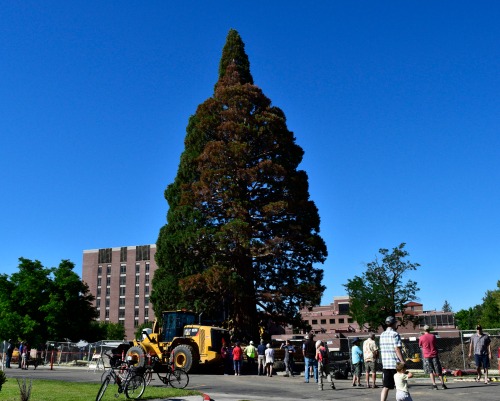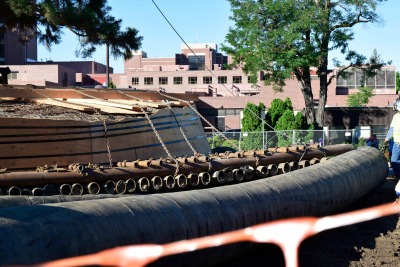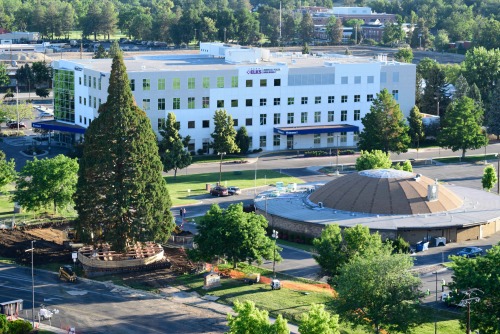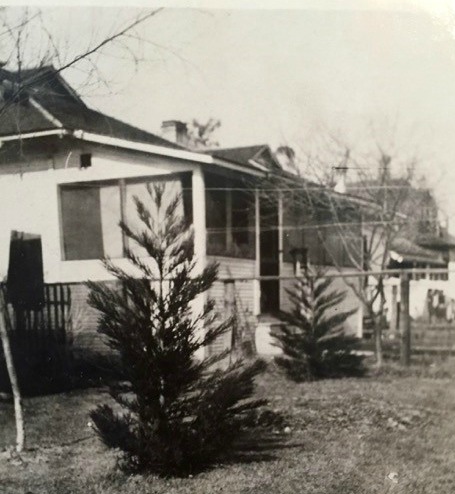Community Looks on as Giant Sequoia Moves to New Home at Fort Boise Park

In Idaho's City of Trees on the first official weekend of summer, the community watched an incredible tree preservation and relocation. Idaho's oldest and largest giant sequoia, with links to John Muir, was pulled from the spot where it has grown for more than a century in front of St. Luke’s hospital, and rolled down the street to a new home at Fort Boise Park.
St. Luke's is preparing to expand its downtown Boise hospital, and the 10-story-tall tree stood at the site of a future hospital tower. The sequoia had been planted there around 1912, at the home of two well-known St. Luke’s physicians.
“Rather than simply cut it down, which would have been far easier and less expensive, St. Luke’s recognized the significance of this 105-year-old community treasure. Building around it was not an option, but saving it was. The value of this tree to Idaho’s history, and to St. Luke’s history, is worth the investment,” said St. Luke’s Public Relations Manager Anita Kissée.
St. Luke’s decided to donate the sequoia as a gift to the city of Boise, much like the tree was a gift to the hospital. It’s believed to have come from John Muir in California, and was one of four to arrive in Idaho via express, two of which were planted near St. Luke's. Only the one tree remains today.
“It is truly a family heirloom,” said Mary Grandjean, the granddaughter of Emile Grandjean, the conservationist who originally donated the tree to Drs. Fred and Alice Pittenger. “We believe the tree speaks to the power of a gift and, in this case, a living gift.”

To move the tree took impressive work. St. Luke's hired the country's top large tree mover, Environmental Design, Inc. David Cox is the co-founder and recalled the first conversation he had with the St. Luke’s project manager. “We get a lot of calls saying ‘I’ve got a tree to move,’ and we get people who say ‘I’ve got a big tree,’ but I was at my desk on my computer and then he started describing the tree. Then I’m looking on Google Earth at the same time and he told me where it was, and I was like ‘yep, you got a big one alright.’”
The team from Texas spent almost two weeks this month preparing the 98-foot tree for its two-block trip, saying at 800,000 pounds and with a trunk more than 20-feet wide, this is the tallest and widest tree they've ever moved. Starting on Friday and stretching into Sunday, the crew used a complex conveyor system to tow the tree up a dirt ramp, to the edge of Fort Street, then down the road where it was lowered into a new hole at Boise’s Fort Boise Park.
“It’s exciting we’re saving the tree because it’s been there a long time,” said Ceclia Lojack, a retired St. Luke’s nurse who brought her grandchildren to watch the event. “It’s an important tree, historically, to St. Luke’s and to the community. It’s nice that we’re trying to save it.”
Getting to this point was complex. The process started in October when the tree mover prepared the sequoia by pruning its roots and installing a barrier to temporarily prevent further growth. Earlier in the month, Environmental Design returned to replace and enhance that support. Workers built a wire, burlap and wood structure around the base of the tree. They then inserted steel pipes under the sequoia to create a lattice-like support structure. Workers secured the tree’s limbs to the supports before excavating under the steel structure to insert giant 40-foot long balloon-like bags. Those bags were inflated to lift the tree three feet, so crews could tow it using two powerful excavators. From there, the tree inched its way up to the edge of Fort Street. As the platform was towed, the giant tubes were deflated, moved to the front and then re-inflated. The sequoia rolled 10-to-12 feet at a time over the course of about a minute and-a-half.

When the sequoia finally reached its new location in Fort Boise Park, it was lowered into place after some additional unexpected digging to accommodate the large platform and inflation bags. The giant air bags were then deflated. Crews will spend the next few days leveling the tree, before removing excess steel pipes and the root barrier. The area around the sequoia will then be back-filled with soil from the original location and irrigated.
St. Luke's worked with the Boise City Forester to determine which location would be best-suited to ensure the health of the tree. It was determined the spot most similar to where it has lived more than 100 years, is near the intersection of 1st, Fort and State streets. Environmental Design will routinely check in and monitor the sequoia's health over the next five years, and says if properly cared for the tree should live another 300-500 hundred years.
“The community really does have a historical artifact,” said Cox. “They’ll all have ownership of this tree from now until here forward.”

HISTORY OF THE SEQUOIA
As the tree's designated community steward, St. Luke's is committed to protecting and maintaining this treasure. The giant grew from a tiny cutting of a sequoia presented as a gift to Drs. Fred and Alice Pittenger and planted next to their home around 1912.
The sequoia was a gift from the conservationist Emile Grandjean, one of Idaho's first foresters. Mary Grandjean, the granddaughter of Emile, says originally there may have been two sequoia trees near St. Luke's. According to her family's oral accounts, the seedlings came from John Muir in California and arrived in Idaho by express. Emile received four, with two given to the Pittenger Family. The other two were planted in the backyard of the Grandjean's home on 11th Street in Boise. The photo below shows the size of those sequoias a few years after they were planted.
In the 1980s the tree almost died. The culprit - the spirit of Christmas. St. Luke's started decorating the tree in 1984, and it became known as "Boise's Christmas tree." For two weeks every year, people flocked to see thousands of lights strung around the limbs, decorations displayed below, and to sing Christmas carols.
Despite consulting with a local horticulture company to ensure the decorations would not harm the tree, the sequoia began to decline. St. Luke's removed the asphalt around it, and several nearby junipers, but the tree's needles continued to brown. So, after the 1987 holiday season, St. Luke's canceled future celebrations in order to save the tree.
As the tree continued to deteriorate, St. Luke's brought in experts from California. At their recommendation, the top dead 11 feet were cut off, and all surrounding turf removed. A "leader" branch was bent up in hopes it would grow to replace the treetop.
Almost 30 years later, the giant sequoia is hearty once again, and healthy enough for its monumental move.
“Over a hundred years later, the final ‘leg' of the gift is the tree’s relocation to Fort Boise Park. Think of the small gestures John Muir and Emile made more than a century ago and how we are celebrating that 98-foot gift today,” said Mary Grandjean. “Our family is grateful to St. Luke’s for its acknowledgement of the tree’s landmark status and for its care of the tree over the years. We are hopeful the tree will grace Boise in its new location for centuries to come.”
SEQUOIA ON SOCIAL MEDIA
St. Luke's posted updates, videos and photos about the sequoia on Twitter and Instagram using the hashtag #BoiseSequoia.
TREE MOVING COMPANY
SEQUOIA STATISTICS:
- Height = 98 feet tall
- Circumference = 20 feet, 6 inches
- Diameter at four feet up = 77 inches
- Weight = 800,000 pounds
- Planted = Around 1912
Boise Sequoia Time Lapse
About The Author

Anita Kisseé was the Treasure Valley public relations manager for St. Luke’s Health System.
